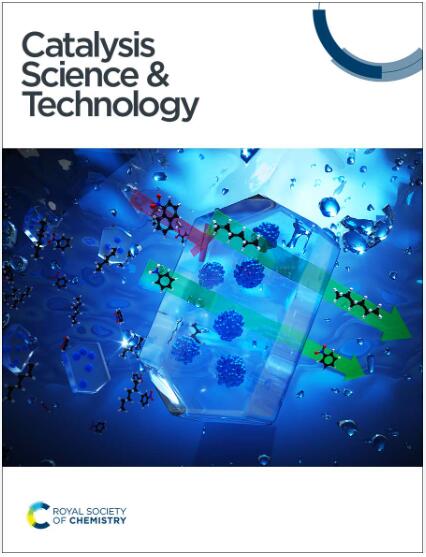Synthesis of photocatalyst composite films from recycled plastics via hot pressing for dye wastewater treatment†
IF 4.2
3区 化学
Q2 CHEMISTRY, PHYSICAL
引用次数: 0
Abstract
The design and synthesis of self-suspended photocatalyst films are vital for environmental protection and resource management. We fabricated plastic-supported Pt/N–TiO2 (PNT) photocatalyst films from waste plastic via hot pressing. We examined the effects of hot-pressing parameters on visible-light-responsive photocatalyst films made from high-impact polystyrene (HIPS), and the influence of source (virgin vs. recycled) and of other waste plastics (polypropylene and polyethylene terephthalate) on the properties and photocatalytic activity of hot-pressed films. When the temperature was not high enough, the polymer did not melt completely, leading to uneven surfaces and poor photocatalyst dispersion. Excessive pressure caused overcompression, increased film hardness, and hindered photocatalyst loading. The optimal parameters for film preparation using recycled HIPS were 140 °C and 90 kg cm−2. Recycled HIPS containing hydrophilic additives exhibited better photocatalytic performance than virgin HIPS. Under optimal conditions, all three types of recycled plastic were effectively pressed into film. After 15 cycles of simulated solar irradiation, HIPS(R)/PNT exhibited 73.17% acid red 1 decolorization and 92.82% catalyst retention. The amorphous nature of HIPS facilitates tight photocatalyst loading, highlighting the potential of recycled HIPS as a photocatalyst carrier. We successfully developed a green waste-derived photocatalyst film preparation method for dye wastewater treatment and waste-plastic recycling.

染料废水热压处理再生塑料合成光触媒复合薄膜
自悬浮光催化剂薄膜的设计与合成对环境保护和资源管理具有重要意义。以废塑料为原料,采用热压法制备了PNT光催化剂薄膜。我们研究了热压参数对高冲击聚苯乙烯(HIPS)制成的可见光响应光催化剂薄膜的影响,以及来源(原生与回收)和其他废塑料(聚丙烯和聚对苯二甲酸乙二醇酯)对热压薄膜性能和光催化活性的影响。当温度不够高时,聚合物没有完全熔化,导致表面不均匀,光催化剂分散性差。过高的压力会导致过度压缩,增加薄膜硬度,并阻碍光催化剂负载。利用回收HIPS制备薄膜的最佳参数为140°C和90 kg cm−2。含有亲水性添加剂的回收HIPS比未加工的HIPS具有更好的光催化性能。在最佳条件下,所有三种类型的再生塑料都被有效地压制成薄膜。模拟太阳辐照15次后,HIPS(R)/PNT的酸红脱色率为73.17%,催化剂保留率为92.82%。HIPS的无定形性质有利于紧负载光催化剂,突出了回收HIPS作为光催化剂载体的潜力。我们成功地开发了一种用于染料废水处理和废塑料回收的绿色废物源光催化剂薄膜制备方法。
本文章由计算机程序翻译,如有差异,请以英文原文为准。
求助全文
约1分钟内获得全文
求助全文
来源期刊

Catalysis Science & Technology
CHEMISTRY, PHYSICAL-
CiteScore
8.70
自引率
6.00%
发文量
587
审稿时长
1.5 months
期刊介绍:
A multidisciplinary journal focusing on cutting edge research across all fundamental science and technological aspects of catalysis.
Editor-in-chief: Bert Weckhuysen
Impact factor: 5.0
Time to first decision (peer reviewed only): 31 days
 求助内容:
求助内容: 应助结果提醒方式:
应助结果提醒方式:


